As we move into the summer months and the drought deciduous plants of spring begin to go dormant, the summer blooms arrive to add their splash of color to Cabrillo National Monument. Clustered Tarweed (Deinandra fasciculate), California Flattop Buckwheat (Eriogonum fasciculatum), and Tall Stephanomeria (Stepanomeria virgate ssp. Pleurocarpa) are currently in bloom at our park. With the yellow, pink and white, and lavender colors respectively, these standouts are the next hosts for the native pollinators to continue gathering nectar.
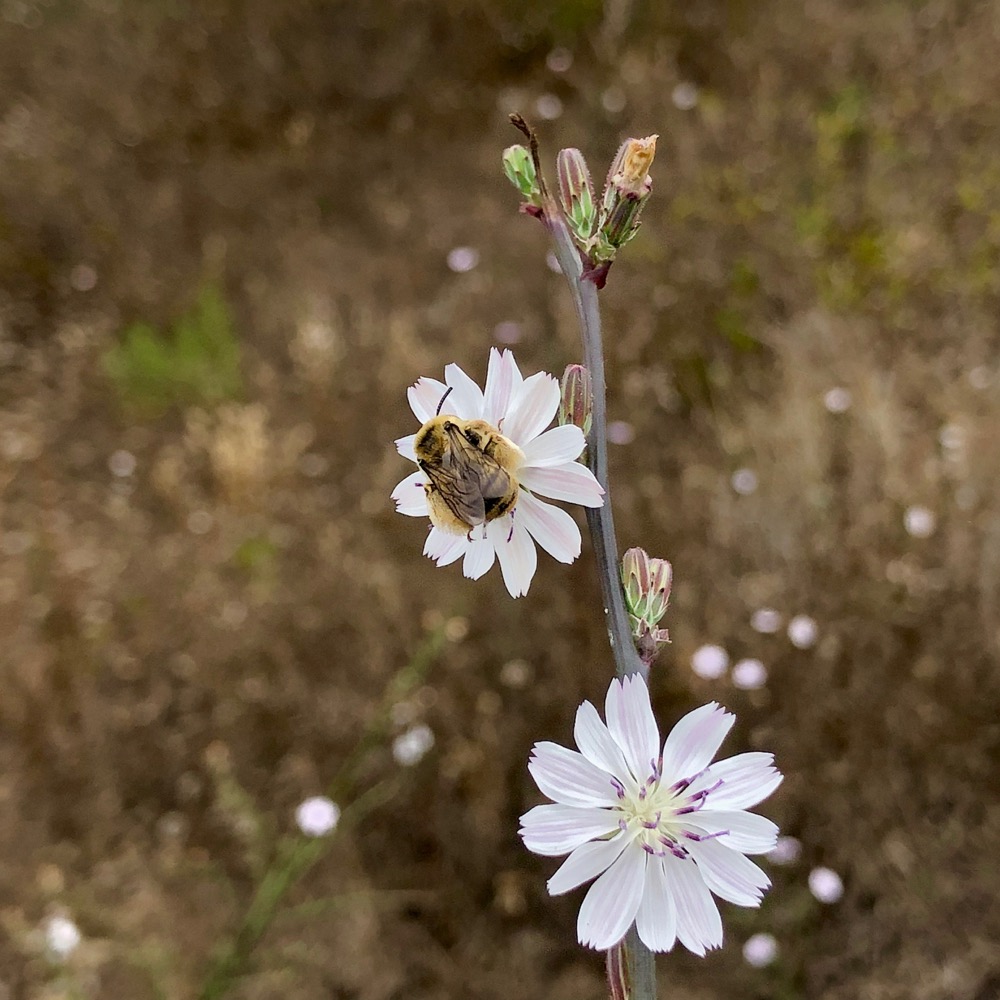 NPS Photo/Andrew Rosales – A native bee on a Stephanomeria bloom.
NPS Photo/Andrew Rosales – A native bee on a Stephanomeria bloom.
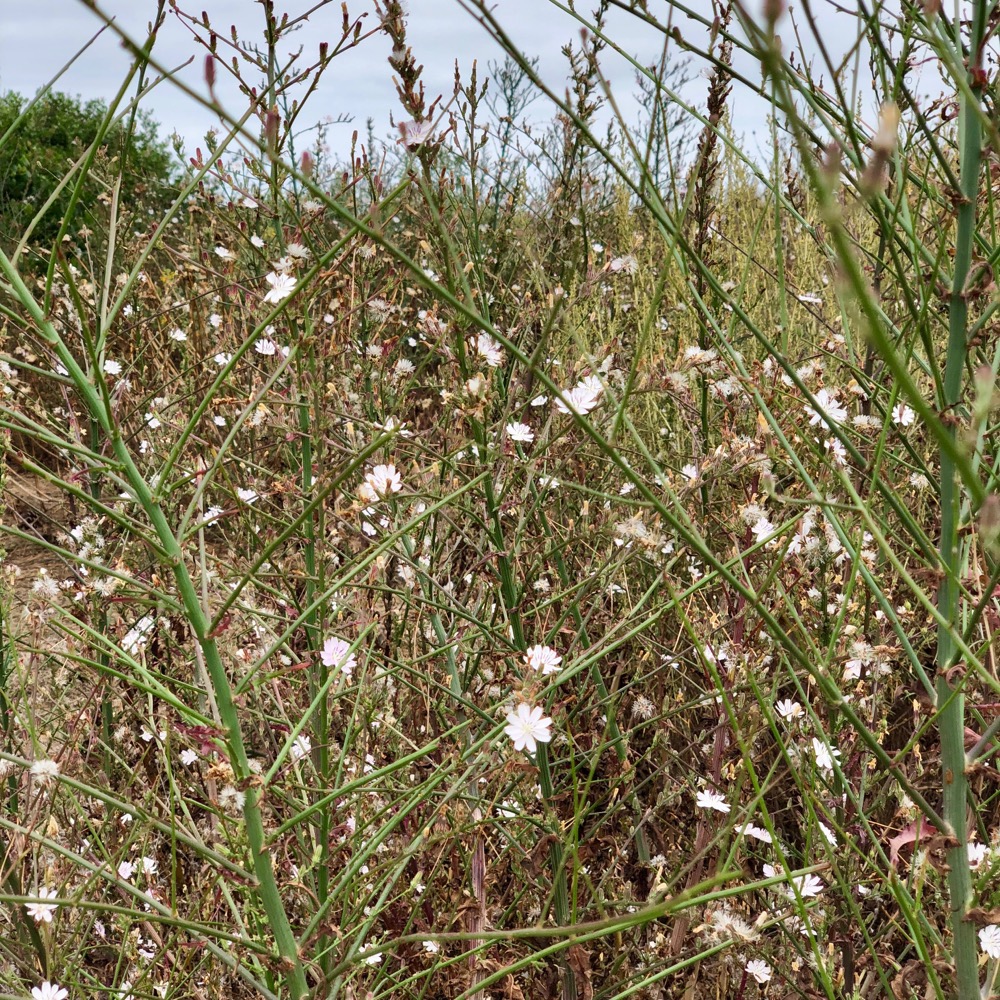
NPS Photo/Andrew Rosales – A group of Stephanomeria species.
There are a group of Three Stephanomeria species in the park. They are San Diego Wreath Plant (Stephanomeria diegensis), Twiggy Wreath Plant (Stephanomeria virgata), and an endemic subspecies Tall Stephanomeria (Stephenomeria virgata ssp. Pleurocarpa). They are all similar in their twiggy shape, with many spreading branches and consisting of wavy or slightly lobed leaves at the base. They range from 0.05m to over 2m in height. The main defining characteristic is the seeds. The virgata species have smooth seeds, while the diegensis has grooved seeds. The flowers range from white to pale pink to dark pink.
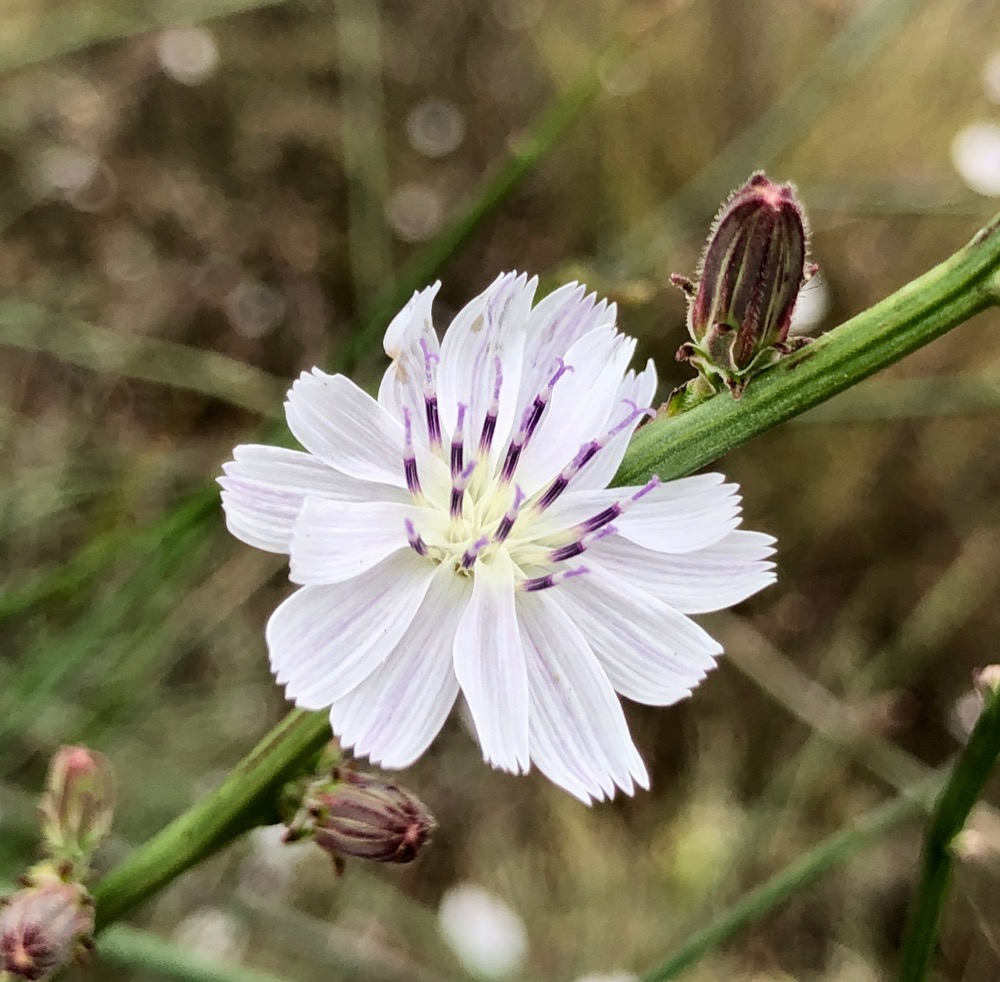
NPS Photo/Andrew Rosales – An open flower and a bud on the stem.
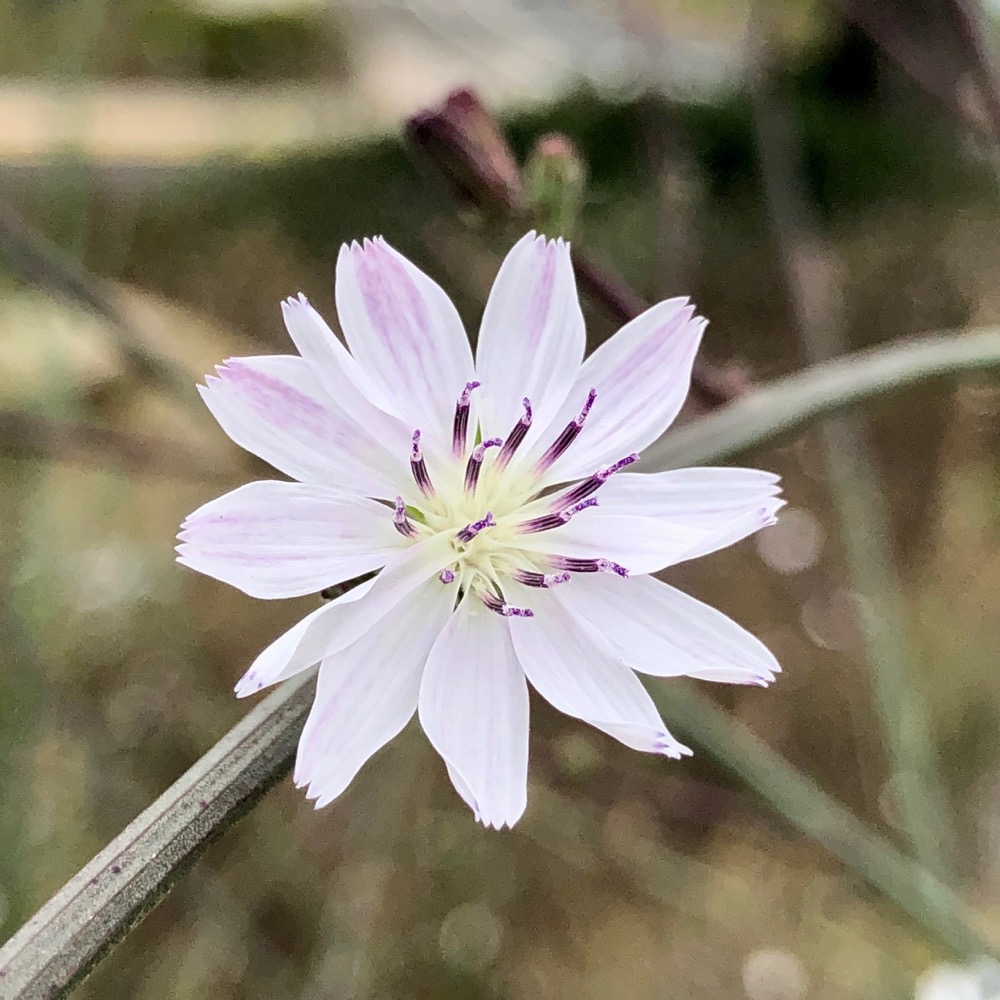
NPS Photo/Andrew Rosales – A single flower on a stem.
When the flowers are pollinated and the seeds ripen, a pappus of white bristles forms. This adaptation is used to disperse the seeds using the wind.
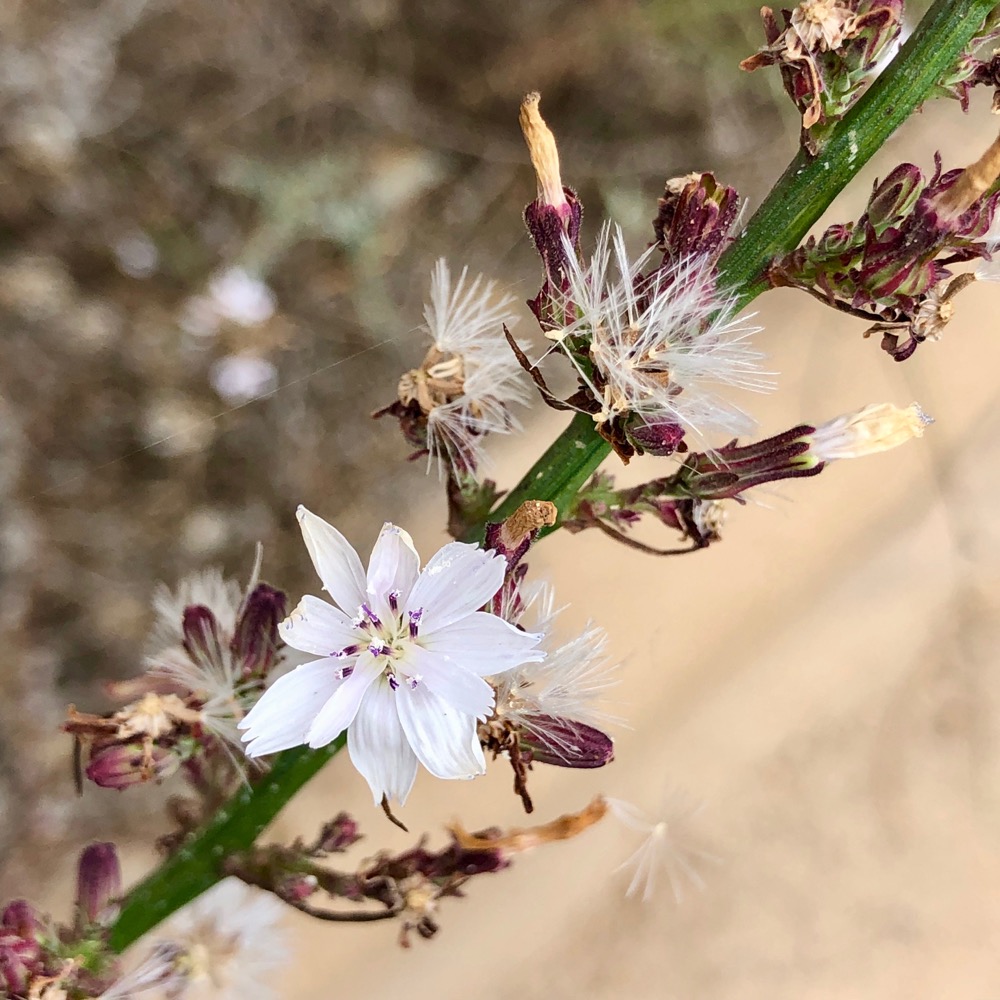
NPS Photo/Andrew Rosales – A stem holds a flower and ripened seeds with pappus attached.
The golden yellow color of the Clustered Tarweed’s (Deinandra fasciculate) flowers are the next most prevalent flower in bloom. These plants can reach up to 1m in height and contain pairs to clusters of deep yellow golden flowers. These striking flowers can be seen along the top Bayside Trail and on the hillsides.
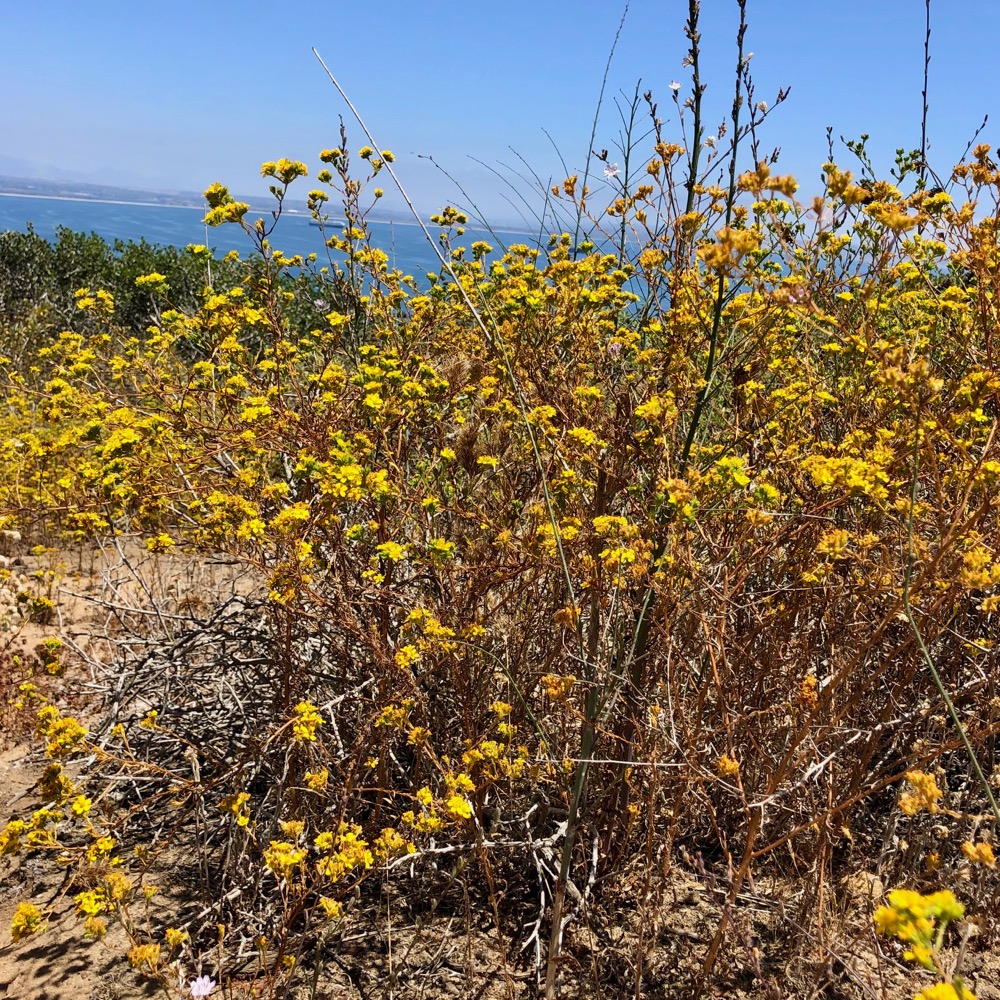
NPS Photo/Andrew Rosales – A tarweed plant.
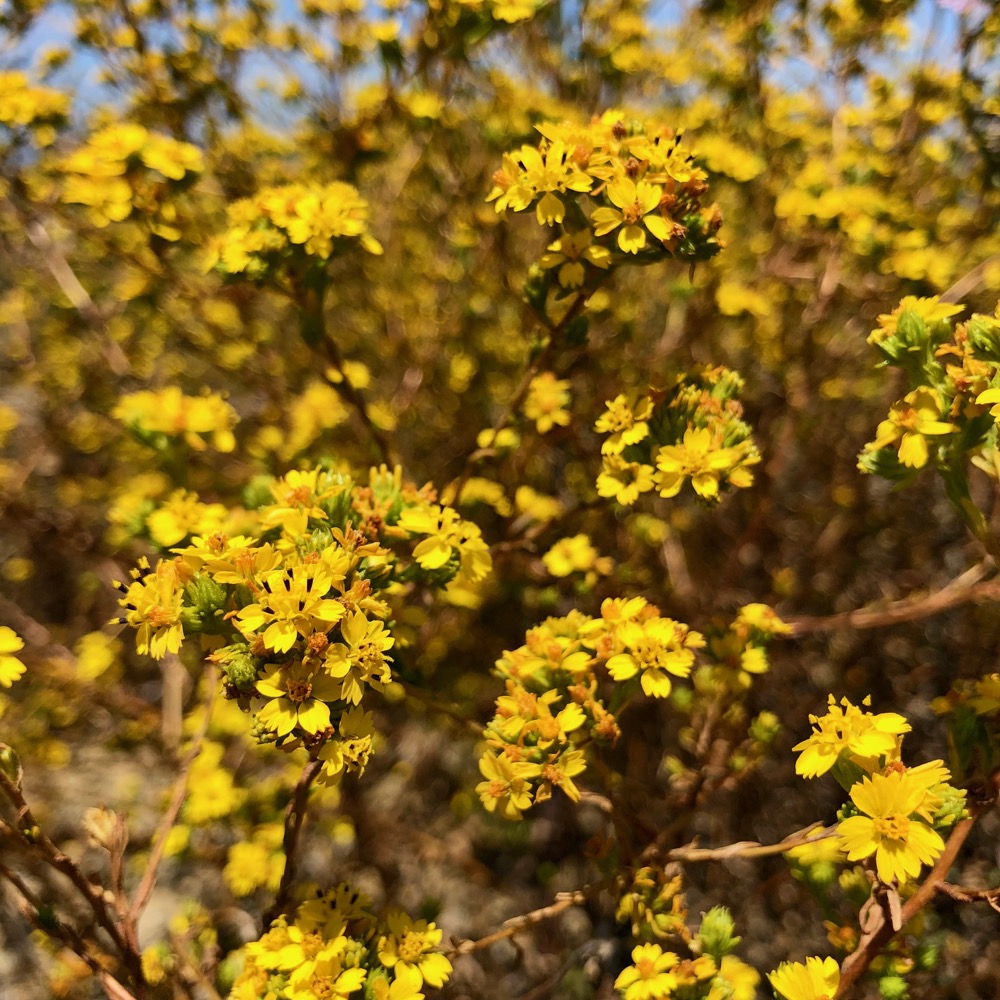
NPS Photo/Andrew Rosales – A view of the groups or clusters of blooms.
The Clustered Tarweed gets its name from the clusters of flower heads, or structures, that it produces. Because this species is in the Asteraceae family, it has both Ray and Disk flowers. This species has five Ray flowers and six inner Disk flowers.
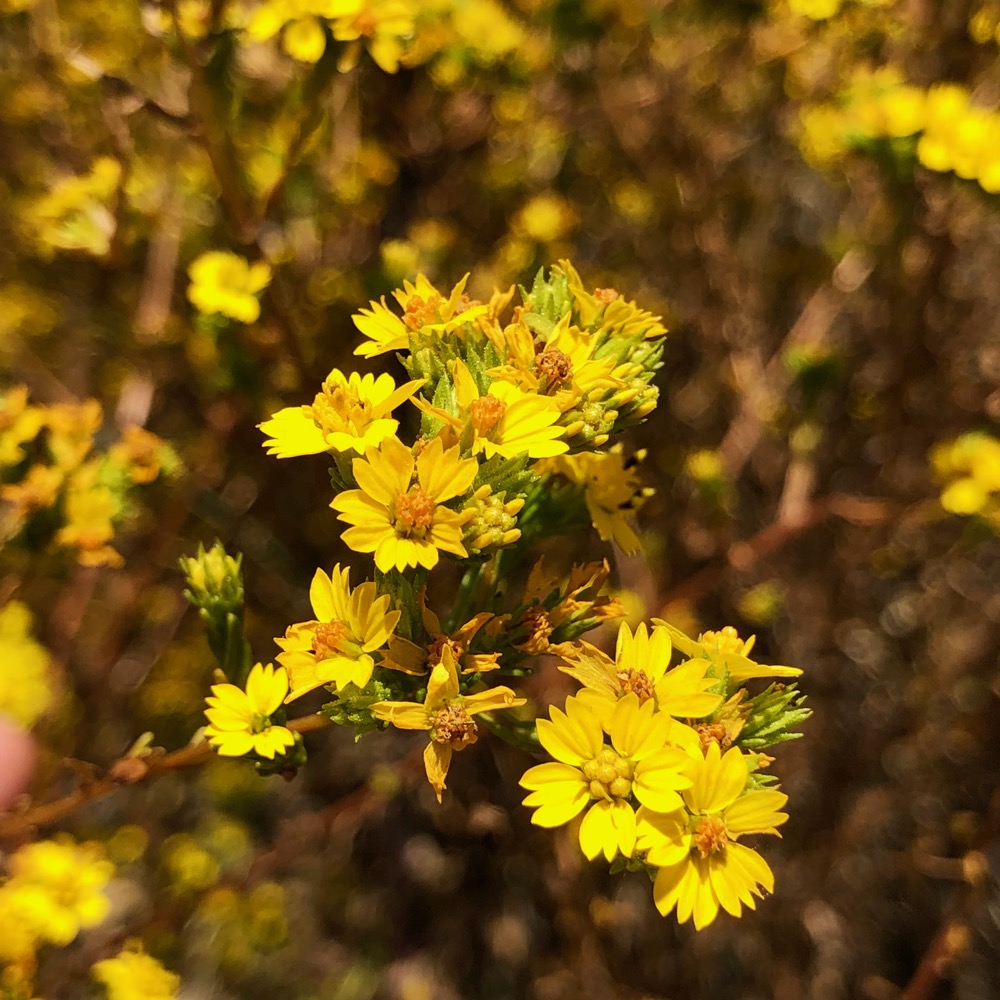
NPS Photo/Andrew Rosales – A bee begins to enter a flower.
The final plant of this group is the California Flattop Buckwheat (Eriogonum fasciculatum). This prolific shrub of the Coastal Sage Scrub can grow up to 2m high and 3m across. The dark green leaves are small and grow in clusters from nodes along its stem.
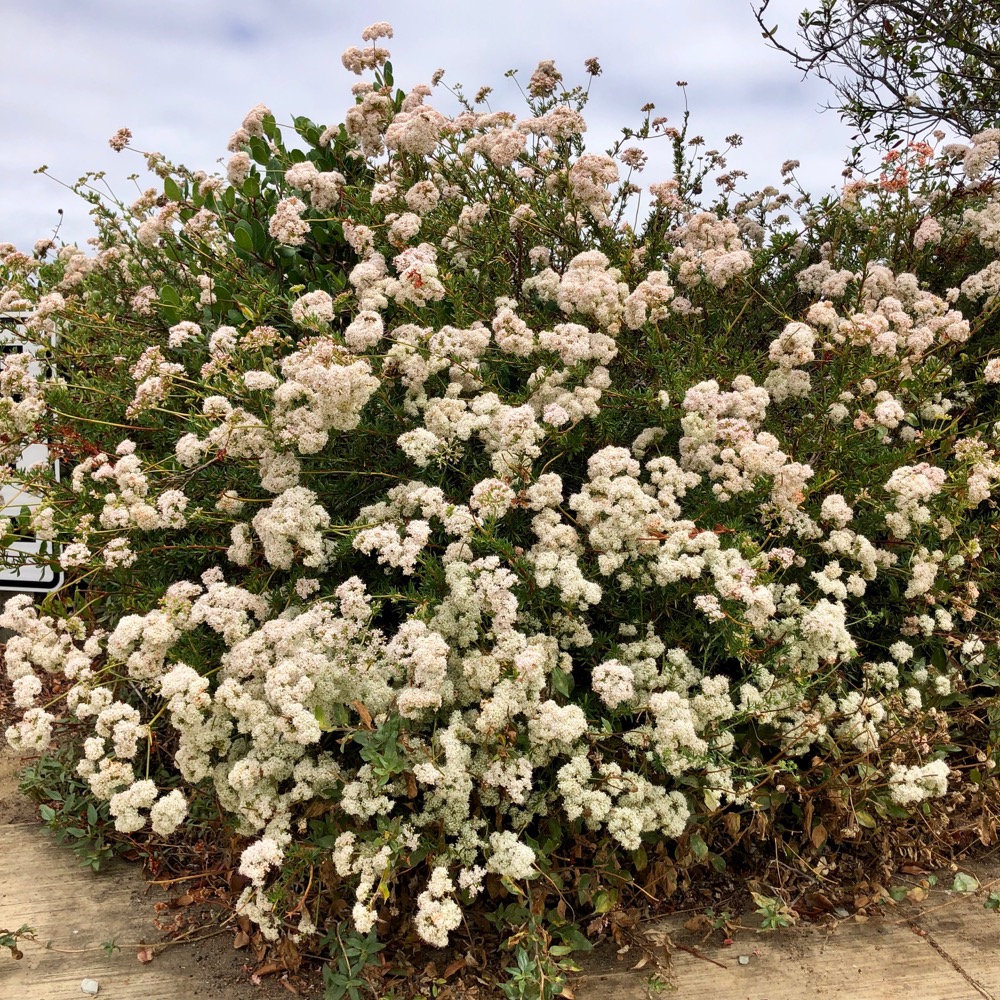
NPS Photo/Andrew Rosales – A California Flattop Buckwheat plant.
The flowers are grouped into clusters and change from a pink bud to a cream bloom with a pale pink center stripe. Each flower is only a few millimeters across with dark pink anthers that stand erect from the flower.
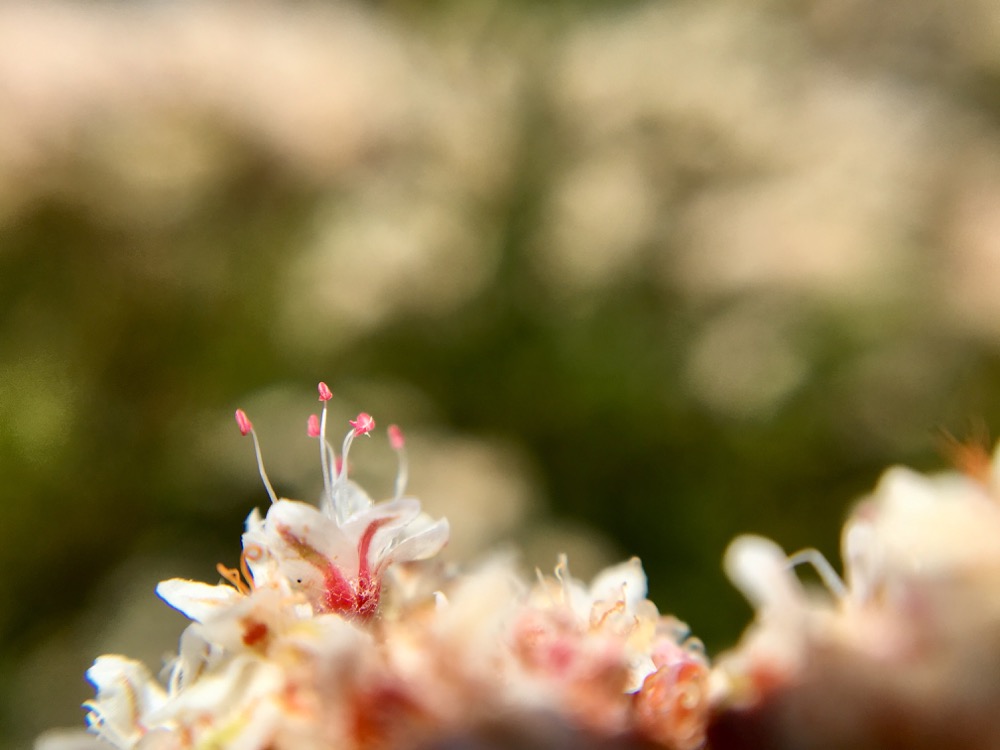
NPS Photo/Andrew Rosales – Detail of the flower’s pink anthers.
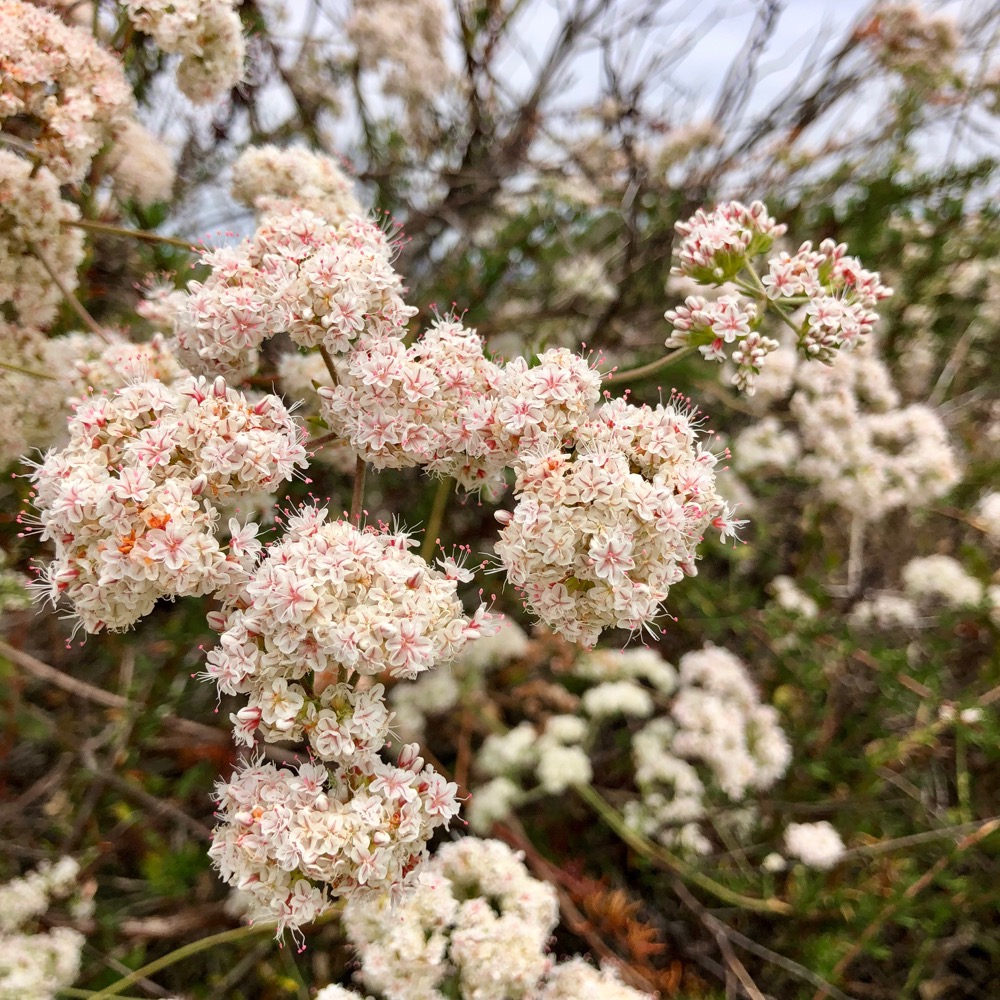
NPS Photo/Andrew Rosales – EriFas Group.
When the seeds of this species ripen, they change to a dark rusty color. This happens in the late summer and the slopes become dotted with spots of rust covered shrubs.
The super bloom may be over, but the blooms continue on into summer here at Cabrillo National Monument. These three native species are all in full bloom and can be seen throughout the park. These are all favorites of our native San Diego Bees, so you may see some of these bees as the flowers continue to bloom in the summer months.
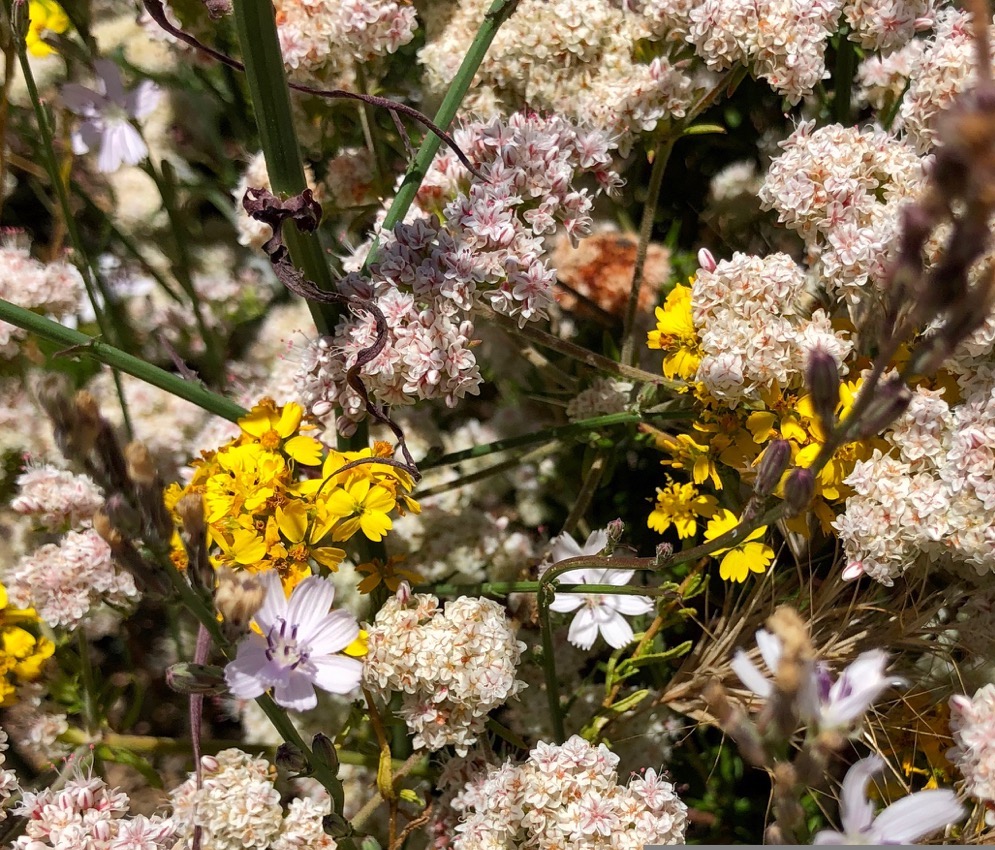
NPS Photo/Andrew Rosales – A group of Tarweed, Buckwheat, and Stephanomaria.
|
June 28, 2019
|
Last updated: June 28, 2019
